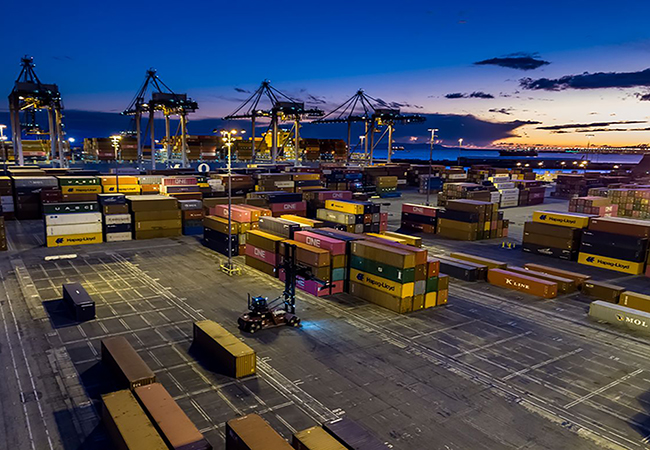Paving the Way: How Simulation is Reshaping Terminal Infrastructure

Ports and terminals are built to move the world. Each year, millions of containers pass through them, ushered by a carefully choreographed system of cranes, trucks, automated vehicles, and people. But beneath all this movement, there’s an unsung hero that supports this worldwide ballet of logistics: pavement.
Many tend to think of pavement as a static, background element of terminal infrastructure. However, it’s one of the most stressed, expensive, and failure-prone components of the port and terminal landscape, as well as one of the most critical. Because when the pavement fails, ports and terminals fall apart.
Each year, ports and terminals are becoming more precise, more efficient, and less tolerant of downtime. With FlexTerm’s advanced simulation and emulation tools, ports and terminals are entering a new era of pavement design, one that poises them for long-term resilience and operational success.
The Need for a Strong Foundation
Ports and terminals are rapidly changing. The increase of automation has transformed not only how terminals operate, but also how stress is applied to the pavement below. Automated guided vehicles (AGVs), automated stacking cranes (ASCs), highly channelized repetitive loads across sections of pavement. These machines move with near perfect consistency, travelling the same routes, making same stops, and turning the same turns over and over again. While this allows ports and terminals to minimize error and reach high levels of throughput, it creates a recipe for early wear and premature failure if the underlying structure isn’t designed to handle the increased repetitive traffic. Luckily, with the help of simulation tools like FlexTerm, engineers might uncover that a high-traffic area requires an appropriate pavement section to withstand tight turning patterns, something that might not be as apparent through traditional design methods.
As automation has increased the throughput and profitability of ports and terminals, it too means that the cost of failure has increased. In an automated terminal, a section of failed pavement can result in hours of system downtime with the need to reprogram automated workflows, resulting in large amounts of lost time and revenue. Traditional pavement design often relies on manual calculations and assumptions, but the reality is that automated terminals don’t conform to a “standard”. They introduce new layouts, traffic patterns, variable loading conditions, and unique operational logistics.
This is where simulation steps in: not as a bonus or added-value, but as an important design component.
Taking the Guesswork out of Design
Simulation technologies now allow engineers to model a port or terminal’s operations in full, before construction even begins. Using tools like FlexTerm, planners can recreate the exact equipment, layout, and operational structure of a port or terminal and monitor how it evolves over large periods of time.
These simulated models aren’t abstract; they reflect real-world equipment speeds and behaviors, such as turning and breaking patterns. These behavioral details often lead to design changes that wouldn’t be directly obvious on paper, such as reinforcing pavement in high-turn areas or modifying pavement sections or types in areas to absorb wheel loads in concentrated queuing zones. They show where AGVs will develop rutts into the pavement over time, where straddle carriers will pile on pressure during peak operations, or where channelized load patterns may force heavy braking and cornering which are the kind of movements that impact the pavement’s structural integrity.
Simulation holds more value than simply predicting wear, it transforms the design process to make it more specific, evidence-based, and aligned with how terminals operate. Instead of overbuilding every pavement section for excessive durability—or worse—underbuilding and hoping for the best, simulation allows designers to target investment exactly where it’s needed. This means lower capital costs, fewer repairs, and a longer, more predictable service life.
A Smarter Designed Future
To summarize, simulation and emulation tools like FlexTerm make it possible to design with foresight rather than assumption. By capturing and monitoring the actual behavior of equipment, traffic flows, and operational patterns, simulation allows planners to stress-test pavement designs under real-world conditions before construction ever takes place. The result is infrastructure that supports how a port or terminal will operate in the real-world, not just how it is expected to on paper. In an industry where precision matters and downtime is costly, simulation allows stakeholders to step beyond traditional design and into a world where decisions are driven by real-world metrics. That’s more than just safer or smarter—it’s essential.
